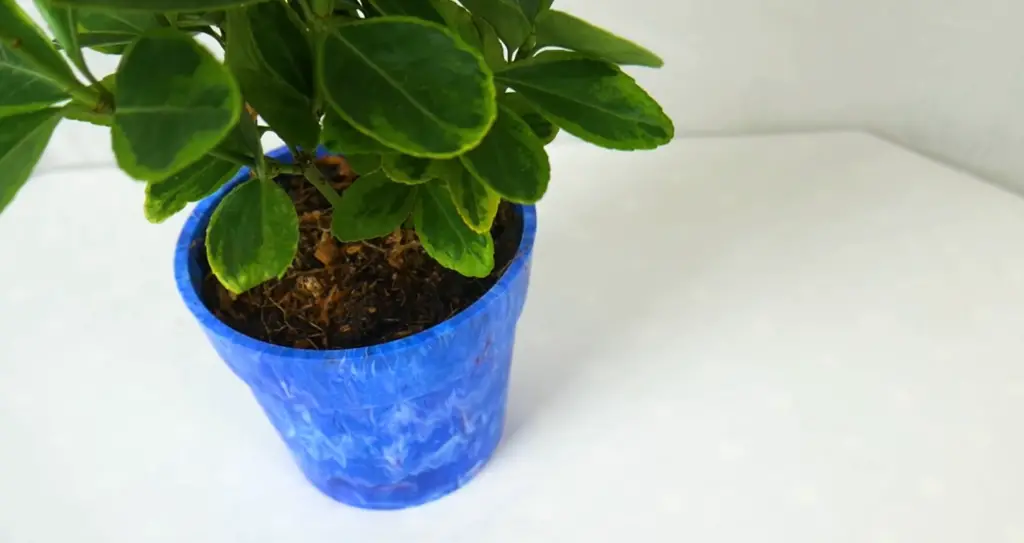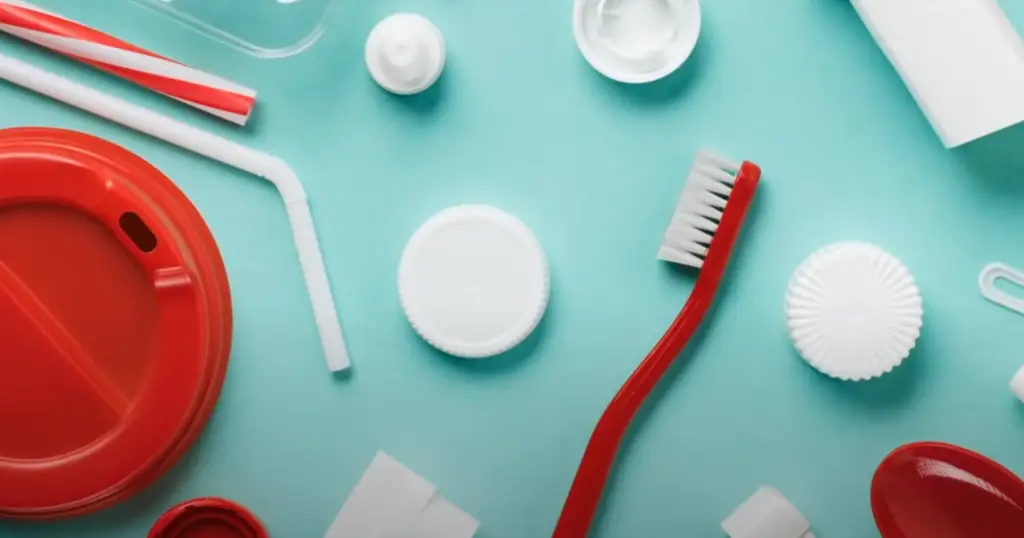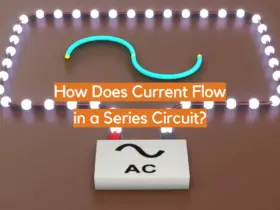Do you ever wonder if plastic is an electrical conductor or insulator? It’s a valid question, with many people being curious about the properties of this ever-popular material. Beyond the fact that it is durable, light and affordable, does plastic really provide what it appears to be capable of through its physical structure? To answer this burning question, here’s all you need to know about plastic properties – what makes it a conductor and what makes it an insulator.
Conductors in General
Metals are the most common conductors of electricity. This is because metals have a high density of free electrons due to their atomic structure. In metals, the outer electrons of the atoms are loosely bound, allowing them to move freely. Other materials that can conduct electricity include graphite, which is used in pencils, and solutions of ionic compounds like saltwater.

The ability of a material to conduct electricity is measured by its electrical conductivity, which is typically expressed in units of siemens per meter (S/m) or ohms per meter (Ω/m). Metals have high electrical conductivity, with copper being one of the most commonly used conductors due to its excellent conductivity and other desirable properties, such as malleability and corrosion resistance.
The efficiency of electrical conductivity in conductors is determined by their resistance to electric current flow. Resistance is measured in ohms (Ω), and it is determined by the composition and geometry of the conductor. The thicker and shorter the conductor, the less resistance it will have, and the more efficiently it will conduct electricity.
However, not all conductors are created equal. Some materials have better conductivity than others, which can affect the efficiency of the electrical system. Additionally, the conductivity of a material can be affected by temperature, pressure, and other factors. [1]
Plastic in General
It’s made from polymers, which are long chain molecules composed of many repeating units. Plastic comes in many forms, from rigid rigid plastics to soft and flexible ones. The most common types of plastic include: polyethylene (PE), polypropylene (PP), polyvinyl chloride (PVC), and acrylonitrile butadiene styrene (ABS).
There are also bioplastics, which are created using plant materials instead of petrochemicals. Examples include cellulose acetate and PLA (polylactic acid).
In general, plastic is used in countless everyday applications like packaging, food containers, and electronics. Its light weight and durability make it a favorite choice for many products.
However, because plastics are not biodegradable, they can linger in the environment for hundreds of years. This has led to an increase in plastic pollution, which is when plastics enter into nature (e.g., oceans or landfills) and accumulate over time. Plastic pollution can have a detrimental effect on wildlife, as well as human health if consumed via contaminated water sources. [2]

Is Plastic an Insulator or a Conductor
Plastic is an insulator, not a conductor. This means it does not allow electricity to easily pass through it. Plastic has many properties that make it well suited for this purpose, including its low cost and its resistance to heat, chemicals, and corrosion.
The type of plastic used will determine how effective the insulation is; different types have varying levels of electrical resistivity. Common examples include polyethylene (PE), nylon, polyvinyl chloride (PVC), and acrylics or ABS plastics. In general, plastics with a higher density are better at stopping the flow of electricity.
In addition to being an insulator, plastic can also act as a dielectric material. As an example, when used in electrical capacitors, plastic helps to store an electrical charge. This is because dielectrics have the ability to increase the electric field strength without allowing current flow.
Plastic can also be used as a heat insulator; it has a low thermal conductivity, meaning it does not easily transfer heat energy from one place to another. It is often used for this purpose in building insulation and refrigerator linings. [2]
Applications of Plastic as an Insulator
Plastic is used extensively in many industries as an electrical insulator because of its low cost, durability, and chemical resistance. And many more! In this section we will discuss some specific applications of plastic as an insulator in the following fields.

Electrical cable sheathing
Plastic is widely used for covering electrical cables to protect them from environmental conditions and mechanical damage. The type of plastic that is used depends on the application and voltage rating of the cable. materials can be divided into conductors, semi-conductors and insulators. In general, plastics such as polyvinyl chloride (PVC), polyethylene (PE) and cross-linked polyethylene (XLPE) are considered good insulators in electrical applications. These materials are typically used as sheathing or jacketing to cover wiring and cables in order to prevent electric shock due to accidental contact with live wires. Additionally, these plastics provide protection against fire hazards by reducing the spread of flames along a cable route.
Cavity wall insulation
Another of the most common uses of plastic in the home is cavity wall insulation. This type of insulation helps to keep homes warm in cold months and cool in hot months by helping to regulate the temperature inside a space. Cavity walls are typically made up of two thin layers of bricks – one on each side, with an air gap between them which is filled with insulating material such as foam or fiberglass.
Plastic is often used for cavity wall insulation because it is highly resistant to water, provides good soundproofing qualities and can be easily cut into various shapes and sizes. It also has excellent heat retention properties, meaning that heated air will stay within the insulated space for longer than it would without insulation. Plastic sheets can be either fitted between the two layers of brick, or can be placed on top of one layer. Some types of plastic insulation are even treated with fire retardants to make them safer in case of a fire.
Insulation properties also make it a good choice for cavity wall insulation as it helps prevent electricity from passing through and potentially causing harm to those living in the home. However, certain types of plastic may have higher levels of conductivity than others and should not be used for this purpose unless specifically designed for such use.

Cooking utensils
Plastic is commonly used in cooking utensils such as spatulas, ladles, and measuring cups due to its lightweight, durable nature. But when it comes to electricity, plastic is an insulator. This means it doesn’t conduct electricity, which may be a good or bad thing depending on the application.
For kitchen use, being non-conductive is advantageous in most scenarios since electrical currents can cause electric shock or even fires if not handled properly. In fact, many electrical appliances designed for kitchen use come with plastic handles that are insulated from the metal parts of the appliance for safety reasons. Some common examples include coffee makers, blenders and food processors.
And not only electricity insulation is necessary! Thermal insulation properties are also an important factor when it comes to plastic cooking utensils. Plastic spatulas and ladles are often made of thermally insulated material, so they won’t become too hot while stirring or scooping hot food. This same thermal insulation is also beneficial when handling cold foods such as ice cream and sorbets, preventing the plastic from becoming brittle at low temperatures.
Pans
Plastic is often used in cooking pans because it does not conduct heat or electricity. This makes them safer than metal pans, which can become hot and cause burns if touched when being cooked on. Plastic also resists corrosion from acidic ingredients like tomatoes, making it a more suitable choice for certain recipes.
Plastic handles on pans are also insulated. This prevents them from getting hot and burning your hands when they are being used over a heat source.
Insulation tapes
Plastic is a versatile material used in many applications, including insulation tape.
Plastic-based tapes are often made from vinyl, polypropylene or rubber-like thermoplastic elastomers. These materials are highly resistant to electric current, making them excellent insulators.
In addition to providing electrical insulation, plastic insulation tape can also protect personnel from coming into contact with live electrical wires. The thickness and adhesiveness of the tape helps secure it in place over joints and splices where cables are connected together. It’s also easy to remove when necessary for repairs or adjustments without damaging the cable insulation underneath it.

Electrical components
When it comes to electrical components, plastic is a great insulator. This means that when electricity passes through plastic, the electricity does not pass into or out of the material. Generally speaking, this makes plastic a poor choice for use in electrical conductors because it limits the flow of current and can cause shorts or spark hazards.
However, there are some exceptions to this rule: certain types of plastics can be used as insulators in certain applications. For example, polyvinyl chloride (PVC) and polyethylene (PE) are both excellent electrical insulators due to their low thermal conductivity and high dielectric strength. These materials are often used in insulation for wires, plugs and other components that require protection from electricity.
In addition to its use as an insulator, plastic is also used in a variety of electrical components due to its light weight and superior durability compared to other materials. Plastic is often used for housing for circuit boards and switches, as well as connectors, terminals and relays. As plastics are increasingly able to withstand higher temperatures and come in a variety of shapes and sizes, they are becoming more widely used in electrical components.
Electrical switches and buttons
Plastic is widely used in the manufacturing of electrical switches and buttons. It provides a durable, cost-effective solution that is easily customizable and can be made to meet specific requirements. Plastic’s superior insulating properties make it an ideal choice for these components, as it prevents electric shocks from occurring when the switch or button is activated.
Furthermore, plastic is lightweight, making installation and maintenance much easier compared to other materials like metal. Additionally, the material’s low cost allows manufacturers to produce them in large quantities without sacrificing quality.
Plastic is also very versatile when it comes to design options, allowing manufactures to create custom shapes and sizes while still providing reliable performance. The material also has excellent corrosion resistance which can extend the life of electrical switches and buttons in harsh environments. Additionally, plastic has a relatively low melting point which makes it easier to work with during the manufacturing process. This helps to reduce production costs significantly, allowing manufacturers to offer consumers more cost-effective products. [2]

FAQ
Is plastic a poor conductor?
Plastic is an insulator, meaning it is a poor conductor of electricity. This means that when electrical current passes through plastic, very little energy or heat is transferred. The resistance to the flow of electrons causes the electric current to die down quickly and not be able to “jump” gaps in the material. As a result, plastic is often used as insulation for wires and other components in both commercial and residential applications.
When it comes to thermal conductivity (the ability of a material to transfer heat), plastic performs even worse than it does with electrical current. This means that plastics are great for preventing heat from escaping a given structure and thus conserving energy within homes or businesses. That’s why so many types of insulation are made from plastic.
Is plastic a conductor?
The answer is no, plastic is not a conductor.
This makes them perfect for use in electronics and other applications where it’s important to keep electricity contained.
Plastics can be made conductive if they are coated with metal or another material that has electrical conduction properties. But even then, the amount of current the plastic can carry will still be much lower than most metals like copper or aluminum.
Some plastics may also have traces of metallic particles that make them slightly conductive, but these particles are usually too small and too few to give notable effects on how much electricity can pass through the plastic.
Why is plastic an insulator?
Plastic is an insulator because it does not allow electrical current to pass through. Plastic, like other non-metals, has a high resistance to electricity, meaning that it resists the flow of electric current and does not conduct electricity well. This is due to its molecular structure, which consists of carbon and hydrogen atoms held together by weak bonds, making it difficult for electrons to move freely from atom to atom.
The density of plastic molecules also contributes to its insulation properties. The closer these molecules are packed together in solid form (as they are in most plastics), the more difficult it is for electrons to travel through them due to their increased physical distance and lack of pathways between them. As a result, plastic acts as an excellent insulator by preventing the flow of electric current.
In addition to its molecular structure, there are other factors that can affect how well plastic acts as an insulator. For example, certain additives can be included in the manufacturing process to increase or decrease the insulation properties of plastic. Adding a conductive material like graphite or carbon fiber to plastic can make it more conductive, while adding an insulating material like silicone rubber will make it more resistant to electricity. The type and amount of these additives used will determine how effective a particular plastic is at blocking electrical current.
Is plastic a conductor and insulator?
The answer to whether plastic is a conductor or an insulator depends on the type of plastic material being used. Generally speaking, most plastics are considered insulators as they do not conduct electricity easily. This makes them useful for a variety of applications such as insulation, packaging and parts in electronic circuits. However, some types of plastics can be made into conductors depending on their chemical composition. For example, polypropylene has been found to be a semiconductor in certain circumstances when treated with additives like graphite or carbon nanotubes.
In general, it’s best to avoid using any type of plastic in applications where electrical conductivity is required or desired because of the potential issues caused by uneven conduction or insulation. It’s also important to be aware of the properties of any plastic material used in a project and seek advice from an experienced professional before making any decisions on its use.
If you are looking for alternatives, metals like copper, aluminum and silver are reliable conductors that can be used in place of plastic. There are also other options such as carbon nanotubes, which have been found to be more conductive than some plastics.
It is important to consider all factors when deciding whether or not to use plastic in applications related to electricity, including safety concerns and proper installation processes. With this knowledge, you can make informed decisions on what materials will work best for your project!
Why is plastic a bad conductor of electricity?
This is because plastic materials are made up of non-conductive molecules such as hydrocarbons and polymers. The electrons in these molecules lack the energy or mobility required for them to move quickly and easily from atom to atom, making plastic a relatively poor conductor of electricity.
The thickness and composition of the material can also affect its ability to conduct electricity—thicker plastic tends to be better at blocking electrical currents than thinner plastic, as thicker layers may contain more non-conductive particles between the electrically charged elements. Additionally, certain additives can be added to plastics during manufacturing processes to further reduce their electrical conductivity.
In general, plastic has been used for many years as an insulating material in the electric and electronic industries due to its low cost, light weight, and flexibility. It’s also commonly used to protect wires from corrosion or moisture damage, and it is often employed as a protective casing for various electrical components. Plastic can even be used to make printed circuit boards (PCBs) for computers, TVs, and other electronics devices.
Useful Video: A Plastic That Conducts Electricity?
Conclusion
Plastic is a great thermal and electrical conductor. It is widely used for electrical insulation, packaging and other applications such as medical equipment and electronics components. It can be both an insulator and a conductor depending on the type of plastic material used. In general, pure forms of plastic are considered to be insulators while those that contain fillers or additives are better conductors. The amount of filler or additive included will determine how well it conducts electricity.
When using plastics in an electrical application, it is important to consider their properties carefully and consult with experts when necessary. Plastic materials can provide excellent insulation for delicate electronic components and systems but must also be able to withstand high temperatures without deteriorating or becoming brittle over time. Additionally, some types of plastic may not be suitable for high-volt
In general, plastics with high levels of electrical conductivity will usually have some form of added metallic particles or compounds in their composition. Plastics without such additives tend to have low levels of electrical conductivity and are more likely to act as insulators. In summary, plastic can be either a conductor or an insulator depending on its composition and structure. It is important for engineers and designers to consider electrical properties of plastic when selecting for their applications.
There are many other factors that can influence the electrical behavior of plastic. These include temperature, humidity, and even the presence of foreign objects or contamination in its environment. Therefore, it is important to understand these factors and take them into account when designing products or systems involving plastics. Overall, plastic has a wide range of applications and can be used as either an effective conductor or insulator depending on its composition and structure.
Thanks for reading our guide on whether plastic is a conductor or an insulator. We hope you now have a better understanding of the electrical properties of plastic and can make more informed decisions when selecting plastics for your projects!
References
- https://www.piper-plastics.com/2020/07/10/is-plastic-a-good-insulator/
- https://engineerfix.com/mechanical/plastic/plastic-is-it-a-conductor-or-insulator/














Leave a Reply